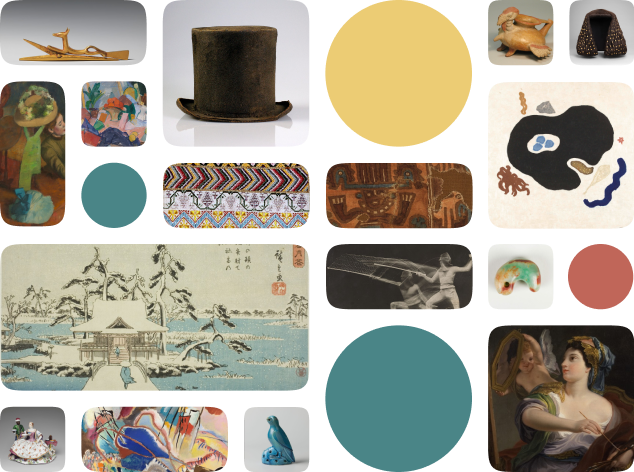Two Chinese Men
Creator Name
Cultural Context
Date
Source
About the Work
Produced by 19th-century artist Utagawa Sadahide around 1860, this woodblock print is a striking example of Yokohama-e, an artistic genre emerging in the late Edo period to document growing foreign influence in Yokohama. While Sadahide had previously explored international themes such as the Opium Wars, his focus on foreign policy intensified after 1854, when the Tokugawa Shogunate signed the Convention of Kanagawa, ending Japan's 220-year national seclusion (sakoku). The isolationist policy, begun in 1633, severely restricted international relations and trade, barred nearly all outsiders from entering Japan, and prohibited Japanese citizens from leaving. Cultural exchange remained suppressed for over two centuries until the Kanagawa treaty opened ports like Shimoda and Hakodate to foreign vessels, reshaping Japan's engagement with the wider world. This process accelerated following the 1858 Ansei Treaties with the United States, England, France, Holland, and Russia, which led to the opening of Yokohama's port to international traders in 1859.
Set in Yokohama shortly after the port's opening, this print exemplifies how Sadahide and other Utagawa School artists adapted the popular ukiyo-e genre—which depicted scenes of everyday life—to capture the city's rapid transformation following isolation. Its red vertical boxed title in classical Japanese identifies the scene as one of a series of "realistically depicted foreigners," reflecting the growing curiosity among ordinary Japanese people about unfamiliar peoples and cultures. Although Yokohama-e prints often featured Western traders from the so-called "Five Nations," this print is distinctive for showing two Chinese men from the Qing Court visiting Yokohama, highlighting expanding cultural exchange within Asia. Chinese immigration surged after the port's opening, creating what is now the largest Chinatown in Japan. The Chinese men in this image wear traditional Qing clothing and queue hairstyles as they curiously examine a Japanese folding fan (sensu), possibly for the first time. A bluish-gray background with a horizontal navy line at the top evokes the port's waterfront setting, while the blend of Chinese and Japanese cultural signifiers illustrates the city's growing cultural diversity.
Work details
Title
Creator
Worktype
Cultural Context
Material
Dimensions
Technique
Language
Date
Provenance
Style Period
Rights
Inscription
Location
Source
Subjects
Topic
Curationist Contributors
Related Content
All Works in Curationist’s archives can be reproduced and used freely. How to attribute this Work:
Help us improve this content!
Save this work.
